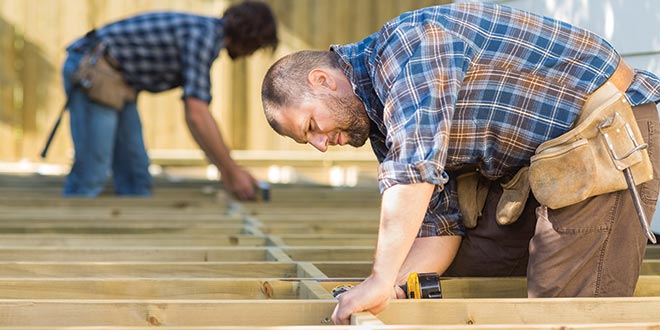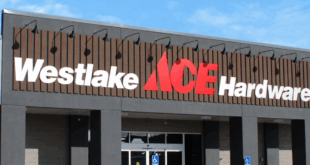Jack Kleinhenz is chief economist for the National Retail Federation (NRF), the world’s largest retail trade association. Formerly with the Federal Reserve Bank in Cleveland, Kleinhenz is a contributing forecaster to The Wall Street Journal, CNBC, the Federal Reserve Bank of Chicago and the Federal Reserve Bank of Philadelphia. For more on the state of the home improvement industry and how hurricanes and other weather patterns have impacted it this year, read the annual Market Measure report.
Hardware Retailing (HR): What trends are impacting the home improvement retail sector?Jack Kleinhenz (JK): According to data from the American Society of Interior Designers, single-family and multifamily residential sectors have show positive revenue trending gains since December 2016. Interior design firms are optimistic, which will have a positive impact on home improvement spending.
Residential and nonresidential construction are also clocking a monthly average of 12 percent and 3 percent respectively in the first eight months of 2017. Residential construction spending includes any spending related to existing homes, new homes, second homes and anything people will need to invest, repair, replace or update. This is a very positive outlook for the home improvement sector, and the trend seems to be on the uptick.
I regularly review a monthly report of retail sales in the building materials sector, and it’s coming in at a fairly nice rate, in excess of 5 to 6 percent. With strengths in the housing market and higher wages, people feel good about their own wealth from home prices and the values of their investments, which all point in the direction of continued home investment, repair and renovation projects.
The retail sector, in general, has been suffering from a lack of pricing power. And if you’re a convenience-style hardware store, you can’t rest your business on price. So, it has to be about offering something else.
I recently went to four different stores looking for nylon paracord. I finally found a hardware store that, even though they didn’t carry what I needed, the owner got online with me to find somewhere that did. I asked him if I could pay him for his help, and he said, “I just want you to come back sometime in the future.”
HR: What do current economic indicators say about the end of 2017, going into 2018?
What does that mean for consumers?
JK: Strong momentum in the second quarter carried us through into the third quarter. The third quarter is a bit of a surprise. I expected more of a speed bump from the hurricanes. We don’t know yet if it’s an overall loss or just delayed spending.
We do know that the supply chains were impacted, whether ports, factories or trucking. In general, we believe that the economy should return to its pre-hurricane path and any loss of spending will be made up going into 2018.
We saw the first vestiges of the impact of the hurricanes in the employment data. They couldn’t get the surveys and collect the data from firms in Florida and Texas, so that causes a concern. On the other side of the coin, the retail sector navigated reasonably well through September. There was a boost in spending on building supplies and materials, but some sectors didn’t do so well because people were displaced from the region.
The momentum before the hurricanes was the combination of rising incomes and employment. Reasonably, we’ll see a rebound into the fourth quarter and into next year, but it will be a delayed response.
Looking at GDP, a softer first quarter is possible, with 2.3 to 2.5 percent growth. It remains to be seen, but there is room to be optimistic. The most recent consumer confidence index reading was a new cycle high. Some of that is due to wage increases, which are up 2.9 percent year over year and are up 2.7 percent year over year for the quarter. Although wages have recently risen, they have not kept pace with higher inflation activities like health care, rent and medical services. Those expenses have been outpacing inflation, and wages have barely been meeting inflation.
Consumer spending continues at a good sturdy rate, but it’s not a breakout speed, largely because consumers continue to be very pragmatic about their spending. It still bodes well for a good start in 2018.
HR: How might the economy affect small businesses in 2018?
JK: Running small businesses will continue to be an ongoing balancing act of having the right pricing and the product when the customer needs it.
Small business optimism is also a function of local demographics. It’s not all one monolithic economy. We have much different spending paces, for example, in the Southwest compared to the Southeast. Some areas will continue to require a lot of effort and “stick-to-itiveness” to be successful.
Population growth has flatlined in some parts of the U.S., which can affect small businesses, especially with aging populations. Sometimes that can be good, with people staying in their homes, but older people also delay improvements because of fixed incomes and other expenses. Medical spending, taxes and utilities could delay projects that would happen if they were 10 or 15 years younger. But I think the home improvement industry is on the front line of these aging-in-place developments.
On the other side of the coin, you have to ask, “What’s going on with millennials?” There has been some delayed purchasing, but now they’re getting back on track, buying homes, making improvements and spending wisely, which should be a positive development in a broader sense for the industry.
HR: What will consumer optimism be in 2018?
JK: What you should be asking is, “Does consumer confidence translate to spending?” I haven’t seen that to be the case.
Consumers are asking, “Do I have a job, am I making more money, what do my retirement investments look like?” All of those seem to be on the right trajectory, which gives them the ability to spend. Their willingness to spend is a different issue.
We’re different than we were before the Great Recession. We’re not taking out as much credit, and banks have tightened up credit requirements for consumers.
 Hardware Retailing The Industry's Source for Insights and Information
Hardware Retailing The Industry's Source for Insights and Information






